Model Aero Polaris Ultra
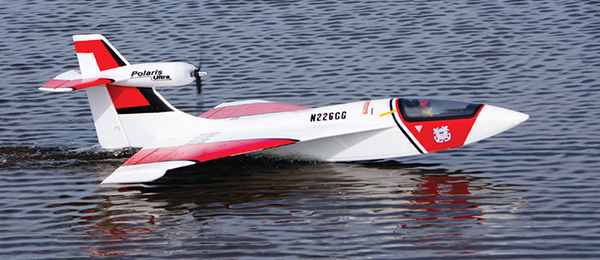
Written by Terry Dunn The popular amphibian is now available in molded EPO foam. Read an abridged version with a bonus flight video. Full event review featured in the September 2013 issue
Specifications
Model type: Electric amphibious ARF Skill level: Intermediate builder; intermediate pilot Wingspan: 34 inches Wing area: 471 square inches Length: 46 inches Weight: 36-38 ounces Components needed to complete: Building supplies; four-channel radio with three microservos; 250- to 350-watt electric power system. Price: $149.95 for foam ARFTest-Model Details
Power system: Spin Max 2810-9 outrunner brushless motor; Master Airscrew 8 x 6 three-blade propeller; E-flite 60-amp Pro ESC; 3S 2,200 mAh 30C LiPo battery Radio: Spektrum DX8 2.4 GHz transmitter; Spektrum AR6115 receiver; three E-flite S-75 microservos Minimal flying area: Club field or pond Duration: 8-plus minutes Flying weight: 37.8 ounces Wing loading: 11.6 ounces per square foot Wing cube loading: 6.4 Full throttle power: 28.4 amps, 328 watts, 139 watts per pound, 10,920 rpmPluses
• Cleanly molded parts. • Amphibious. • Wide speed range.Minuses
• Unnecessary paint. • Elevator servo is time consuming to install.Abridged Article Review
Great designs never die, they evolve with the times. Such is the case with Laddie Mikulasko’s North Star. Originally a .40-size balsa/plywood amphibian from the 1980s, North Star was reincarnated a few years ago by Steve Shumate as a sheet-foam park flyer called the Polaris. Model Aero began offering kits of the Polaris in three sizes. The popularity of those kits has spawned the latest derivative of the series: the Polaris Ultra. The Polaris Ultra arrived as a kit with a few airframe parts and all of the necessary hardware. The main airframe components are nicely molded and are prepainted in a U.S. Coast Guard scheme. Self-adhesive decals are included to complete the look. On my kit, there were some areas where the painted stripes had bled under the masking tape. Other than that, the color scheme is well executed. The instruction manual is on a CD. The directions are short on details, but the kit is so simple that experienced modelers for whom this airplane is intended should have no problem sorting it all out. The elevator servo isn’t overly difficult to install, but the level of effort required for the task is inconsistent with the ease of assembling the rest of the model. When installing the rudder servo and single aileron servo, both fit precisely into their molded pockets within the roomy fuselage. I simply trimmed off the servos’ mounting ears and pushed them into place. Excluding overnight drying time for the canopy glue, I had my Polaris Ultra ready to fly after only one evening in the shop. I set it up with the recommended control throws and exponential on my Spektrum DX8 transmitter. To attain the suggested CG, the flight battery was placed near the rear of its compartment. The Polaris seemed to jump as soon as I added throttle. A little up-elevator broke it free of the water and initiated a climbout. Once in the sky, the Ultra accelerated quickly. Rudder response is slightly sedate, but the Ultra is capable of all of the basic four-channel aerobatics. It has plenty of power for tall up-lines and big loops. One particularly fun maneuver is a slow-speed, high-alpha flyby. On high rates, the roll rate is quite fast. I’ve been having fun with my Polaris Ultra. I appreciate its wide speed envelope and its ability to fly from grass or water. It is a versatile sport model with many tricks up its sleeve. The Polaris Ultra has been nothing but good times. I can see why Laddie’s original design has lasted for so long. Read the complete review in the September 2013 issue of Model Aviation.Flight Video
Review Photos
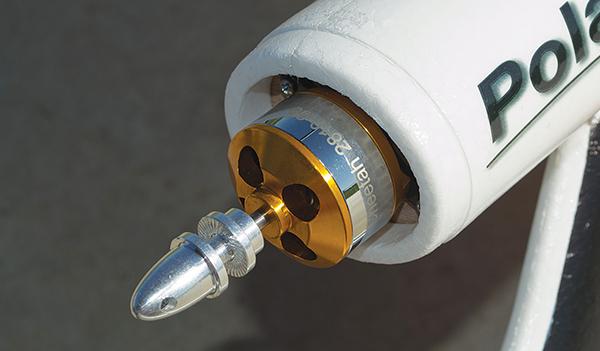 The Spin Max 2810-9 motor fits perfectly within the Polaris’ cowling and easily bolts to the firewall. With a 3S-2200 battery and three-blade 8 x 6 propeller, the Polaris moves.
The Spin Max 2810-9 motor fits perfectly within the Polaris’ cowling and easily bolts to the firewall. With a 3S-2200 battery and three-blade 8 x 6 propeller, the Polaris moves.
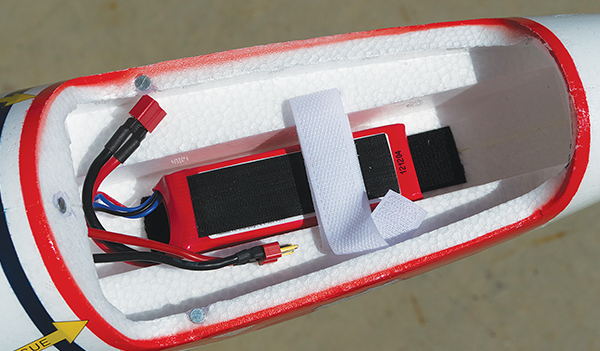 There is ample room in the battery compartment to place a wide range of batteries. I like the performance and endurance provided by 3S 2,200 mAh packs.
There is ample room in the battery compartment to place a wide range of batteries. I like the performance and endurance provided by 3S 2,200 mAh packs.
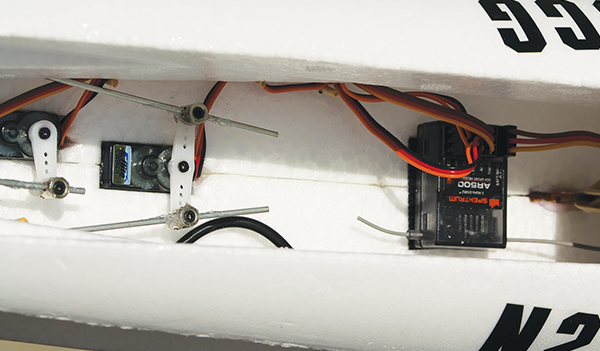 The Spektrum AR500 receiver and S75 servos for the rudder and ailerons reside below a vented hatch in the middle of the fuselage.
The Spektrum AR500 receiver and S75 servos for the rudder and ailerons reside below a vented hatch in the middle of the fuselage.
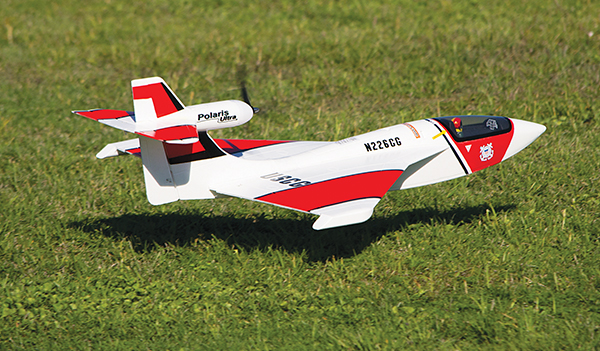 It’s not hard finding a place to fly the Polaris Ultra. The flat-bottomed hull works well on grass or water.
It’s not hard finding a place to fly the Polaris Ultra. The flat-bottomed hull works well on grass or water.
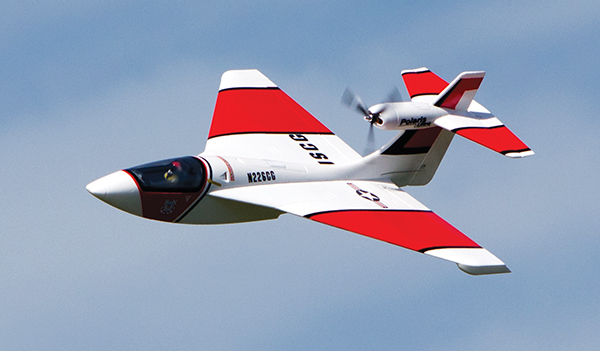 The Polaris Ultra is deceptively sleek and capable of surprising speed. At the same time, it can be slowed to near-walking speed for landing.
The Polaris Ultra is deceptively sleek and capable of surprising speed. At the same time, it can be slowed to near-walking speed for landing.
Similar Articles
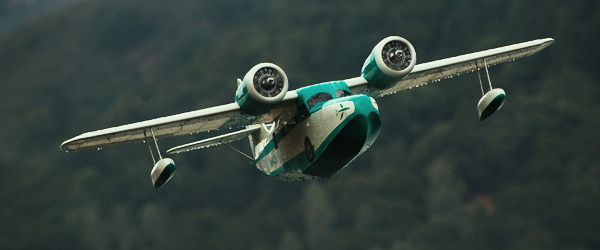 | The Grumman Goose Designed by Paul Kohlmann.Watch flight videos, read excerpt from the article, and order plans. |
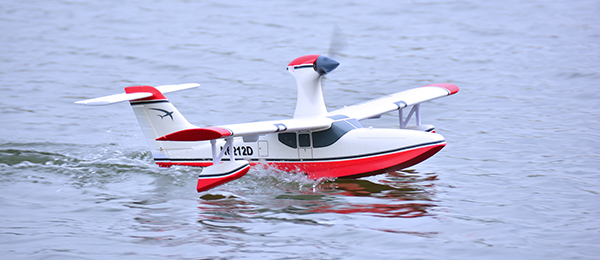 | Flyzone Tidewater Article and flight video by Joe Hass. Captain this seaplane. Digital exclusive review and flight video. |
| The Icon A5 Written by Jay Smith. Find the full feature on page 55 in the May 2012 issue. Watch a shop video and an interview with the designer |










Add new comment